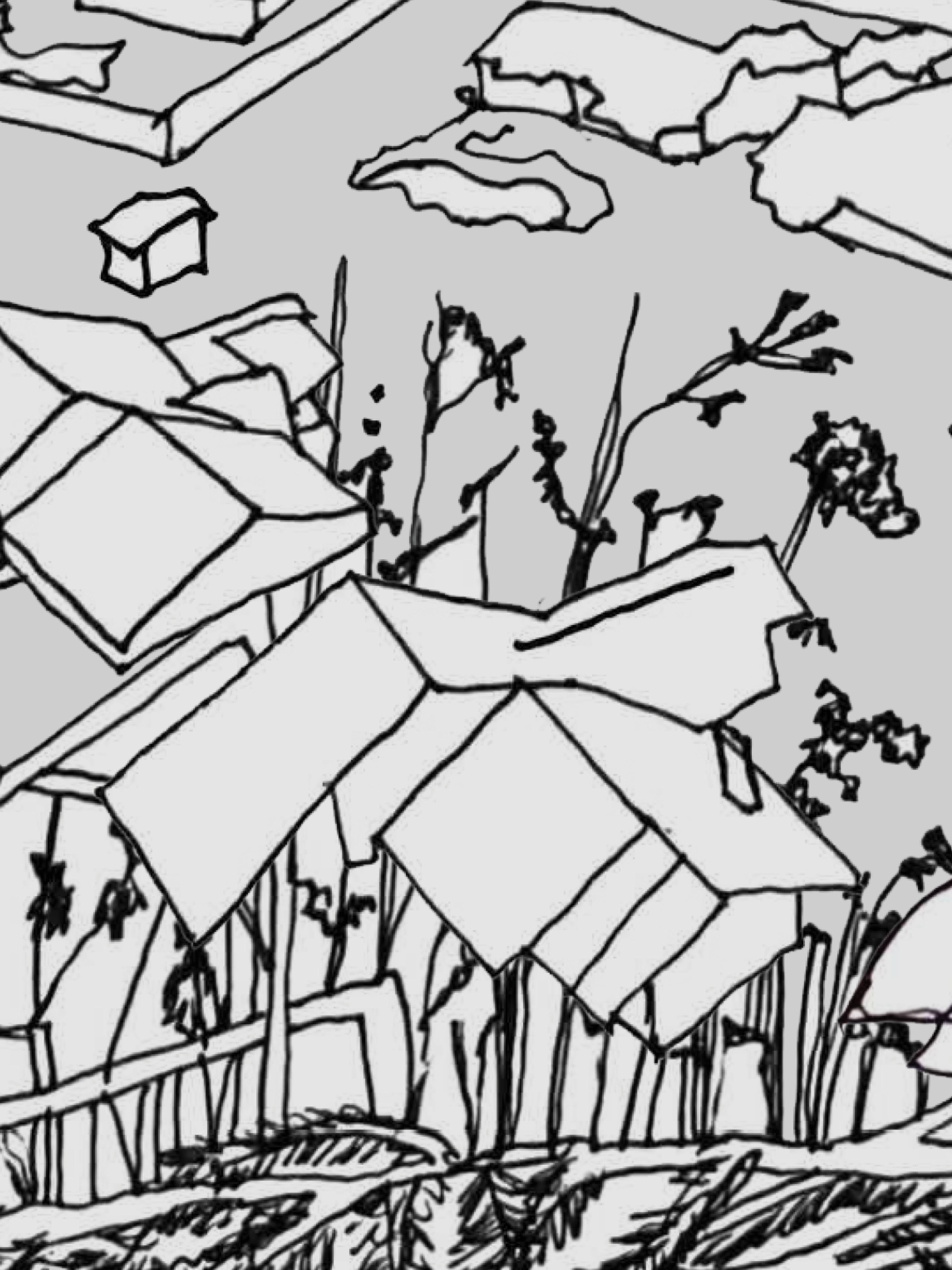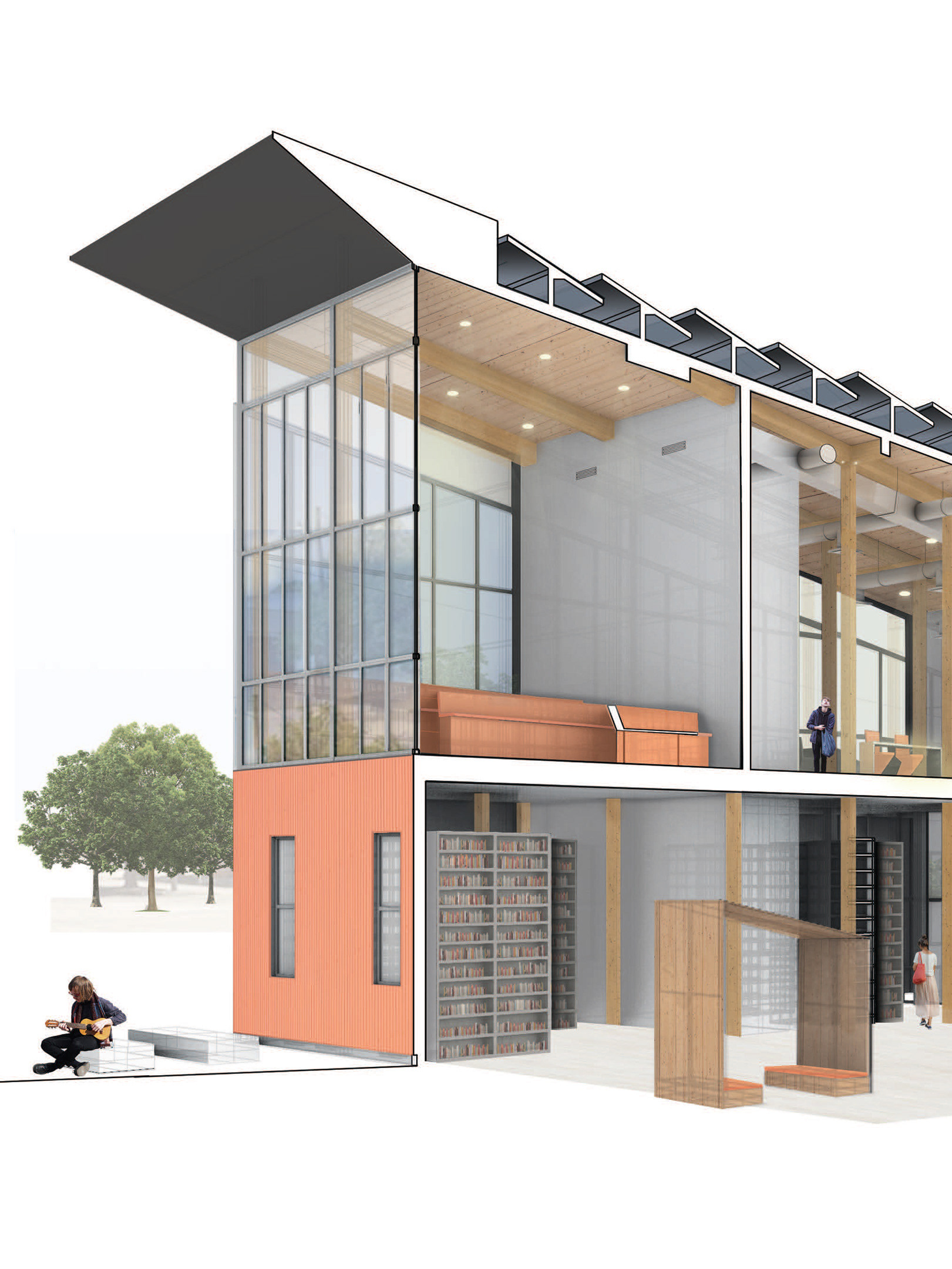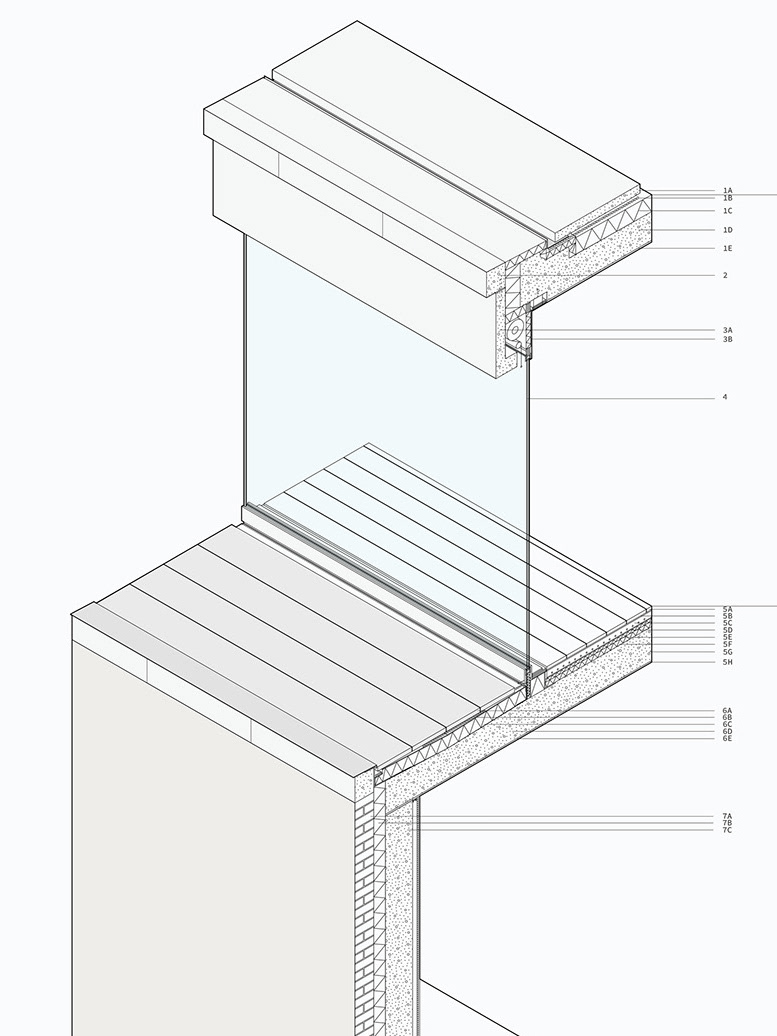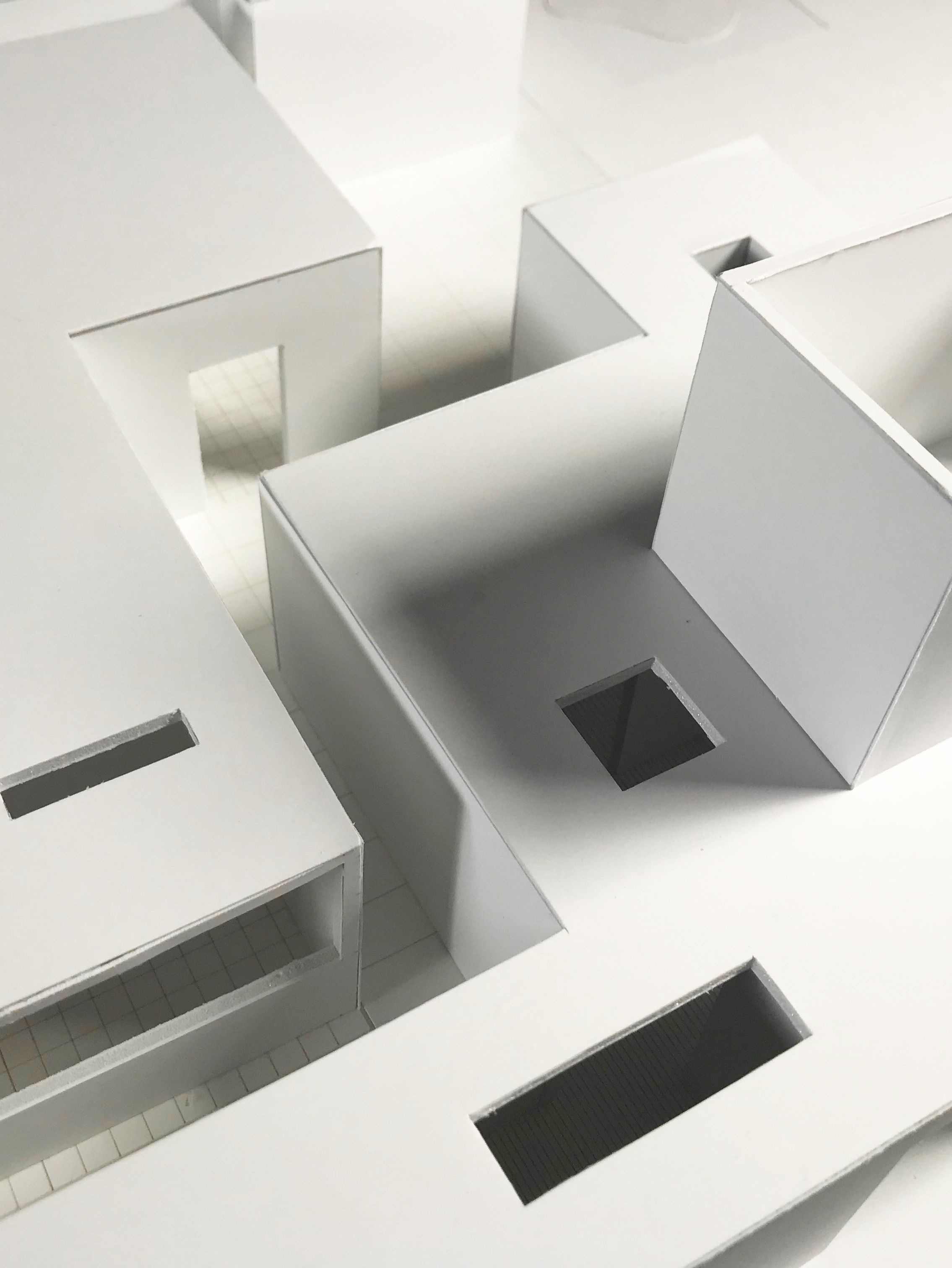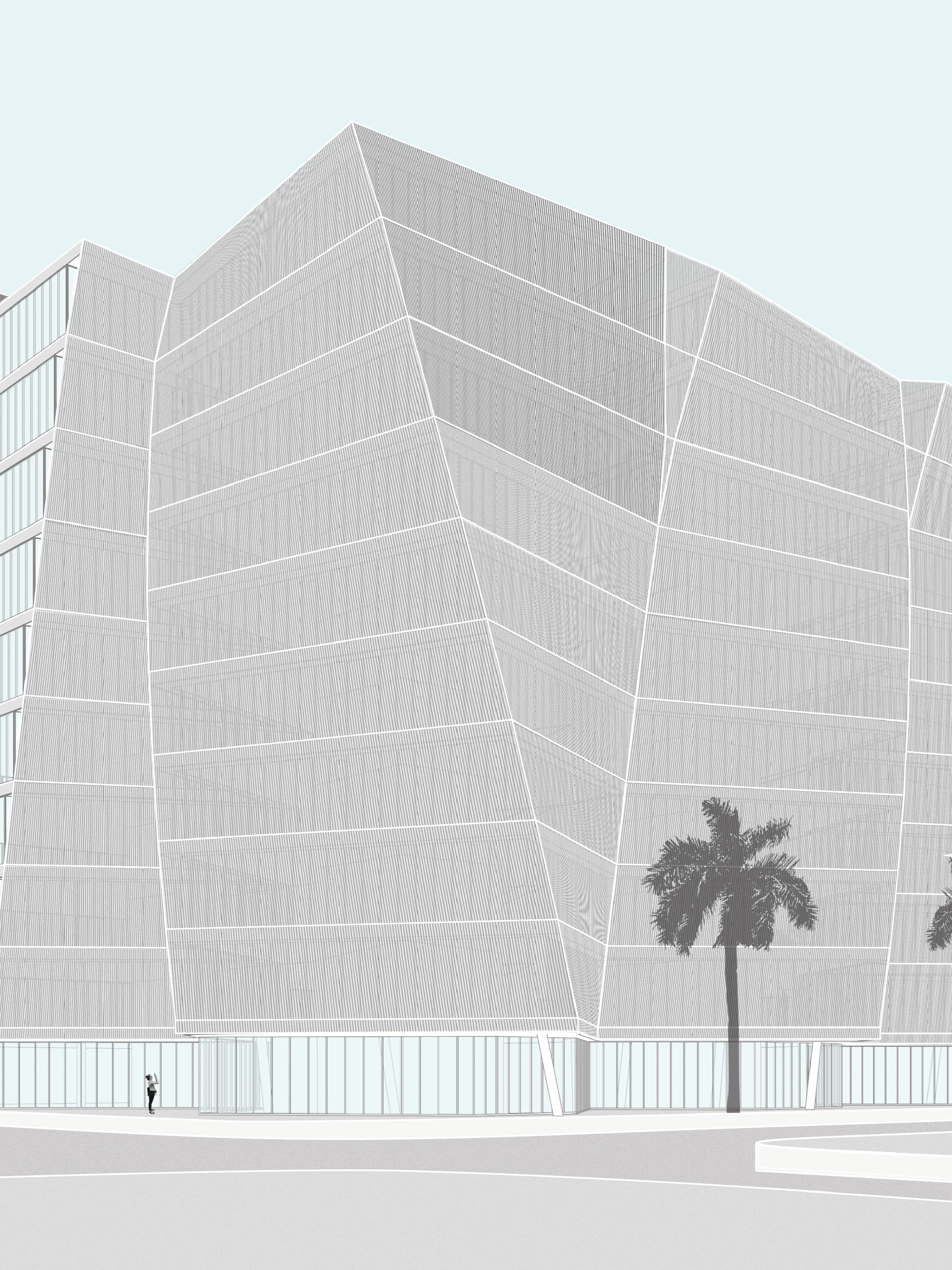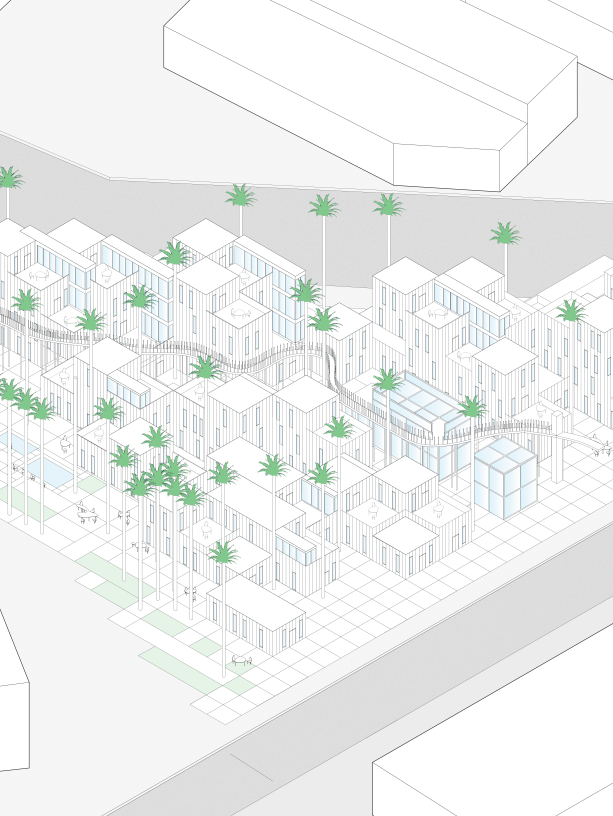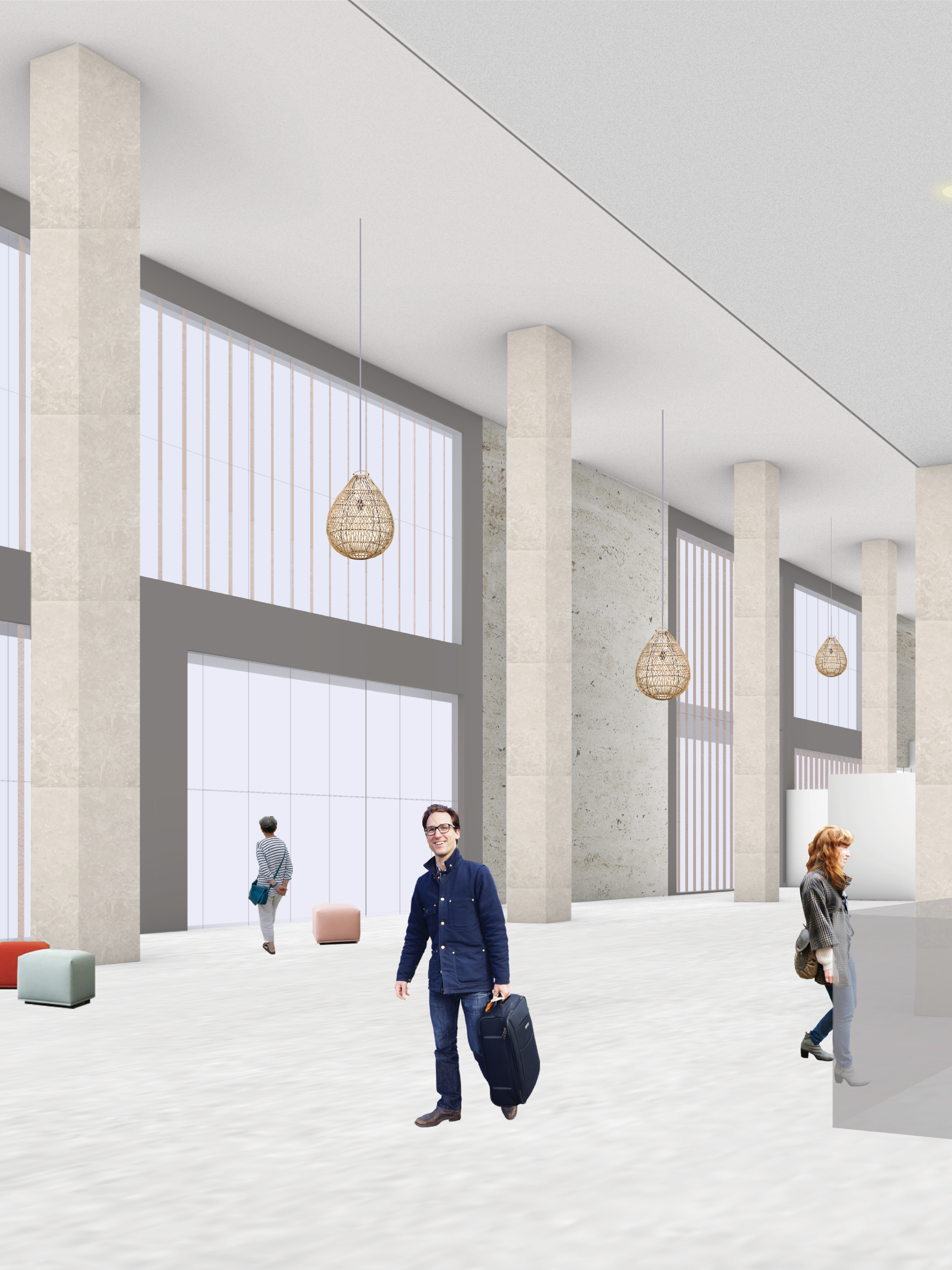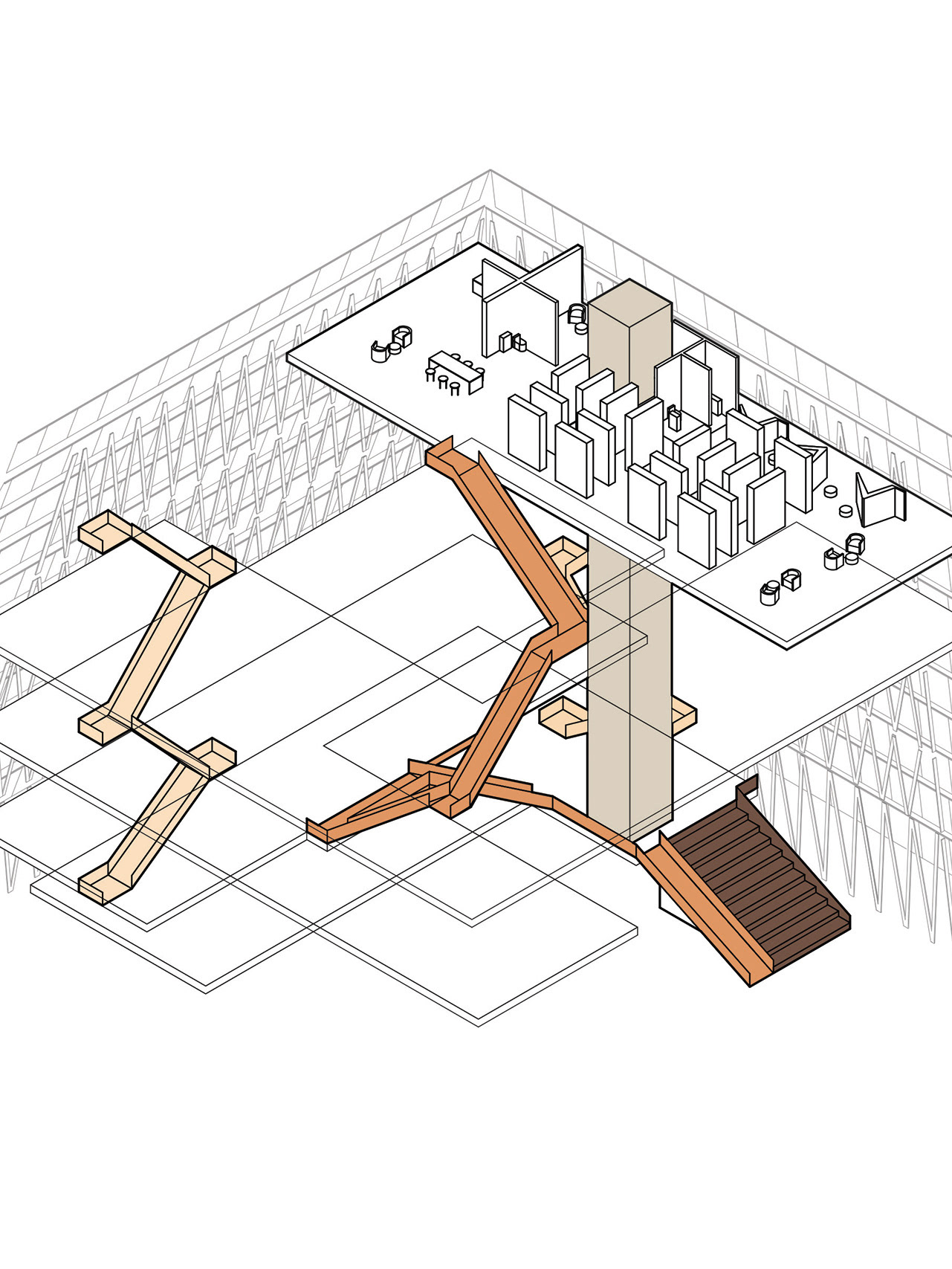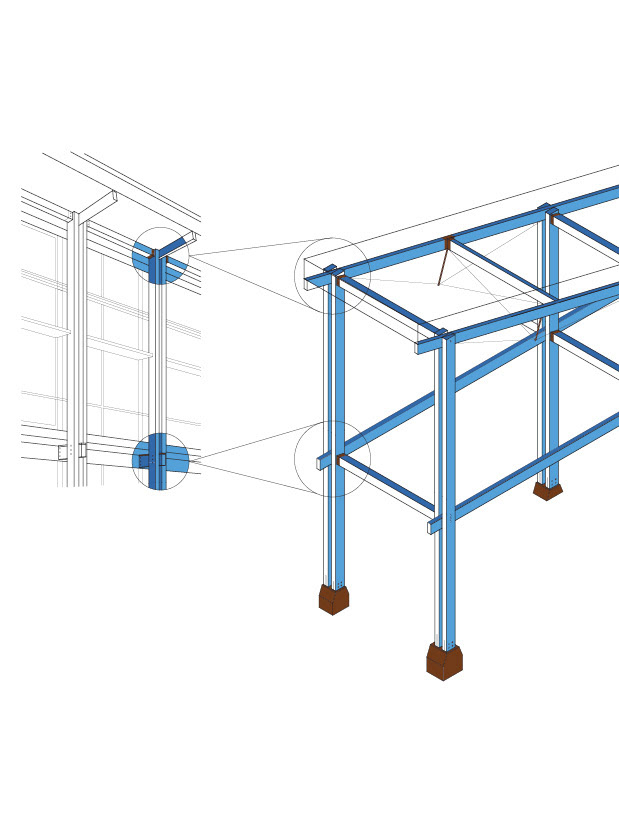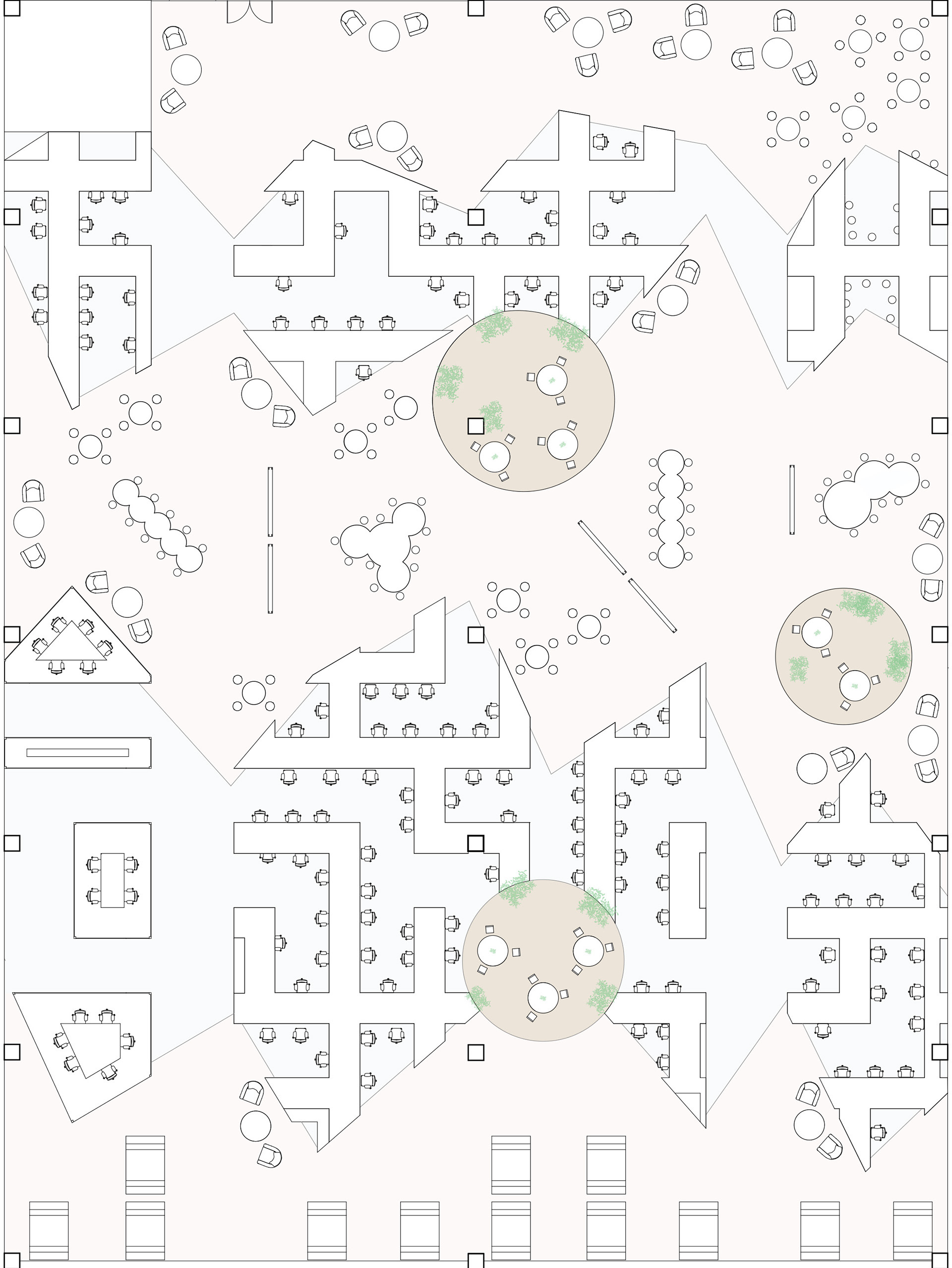In my first advanced studio, "Fabrics: Turning a Subdivision into a Neighborhood," we were tasked with exploring the role of micro-and-macro-pattern languages in transforming a subdivision into a neighborhood with placemaking ambitions. The neighborhood that was focused on was in the "unimproved" fabrics of Cherokee Village, a 1960s suburban residential recreation community with over 25,000 home sites. In a group with 4 other students, I spent the semester exploring placemaking strategies in neighborhood design, including pocket neighborhoods and other communal housing configurations, shared residential courts, “living streets”, neighborhood greens, urban agriculture including community gardens and greenhouses, and bike/pedestrian/art greenway systems.
One aspect of the design that I focused on designing personally was the living street, which occurs upon entry to the neighborhood. Here, the street becomes a living transept. From semi-public in the alleys, to private with the garages and homes, to public with the street and public park, back to private and back out to the alley, the entire cross-section is brought to life. This idea encompasses our model for thinking about the rest of the project, thinking about the alley as more than a place to drive, but a place to live, and thinking about the street as more than a place for the car to drive, but a place for people to move through, gather, and inhabit.
existing street network (designed in 1960)
restructured street network
living street axonometric
living street plan and cross-section
